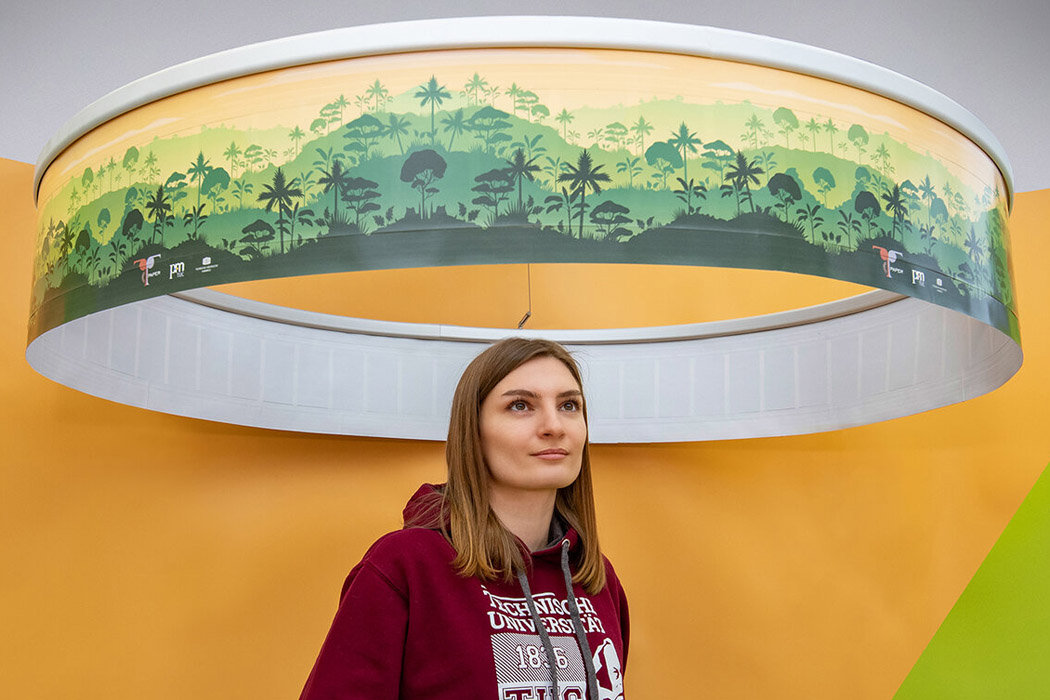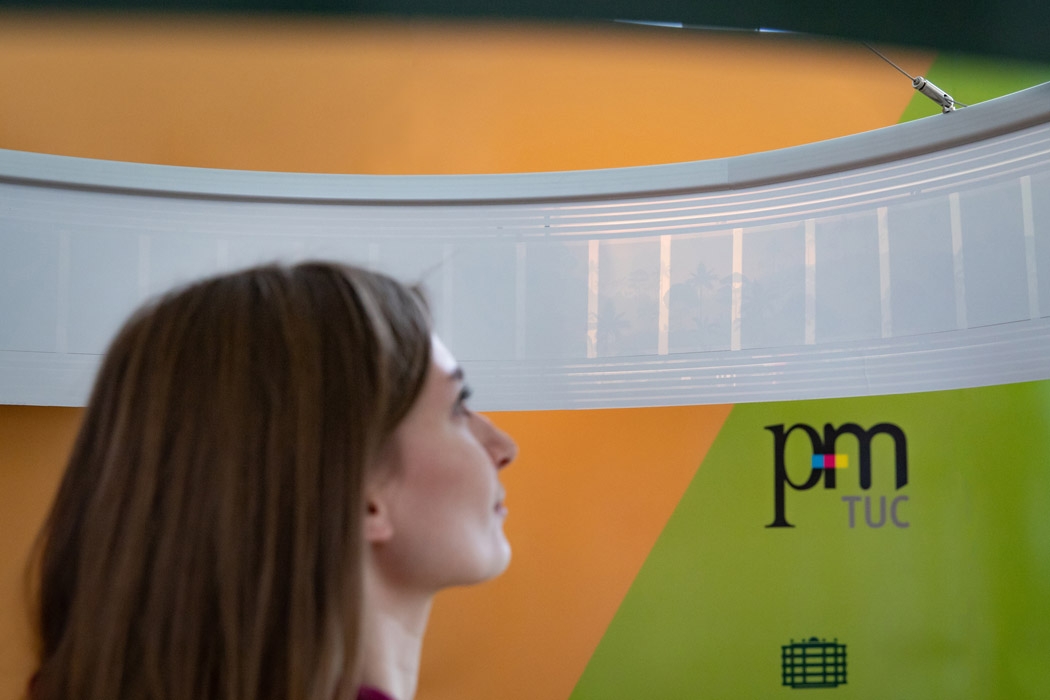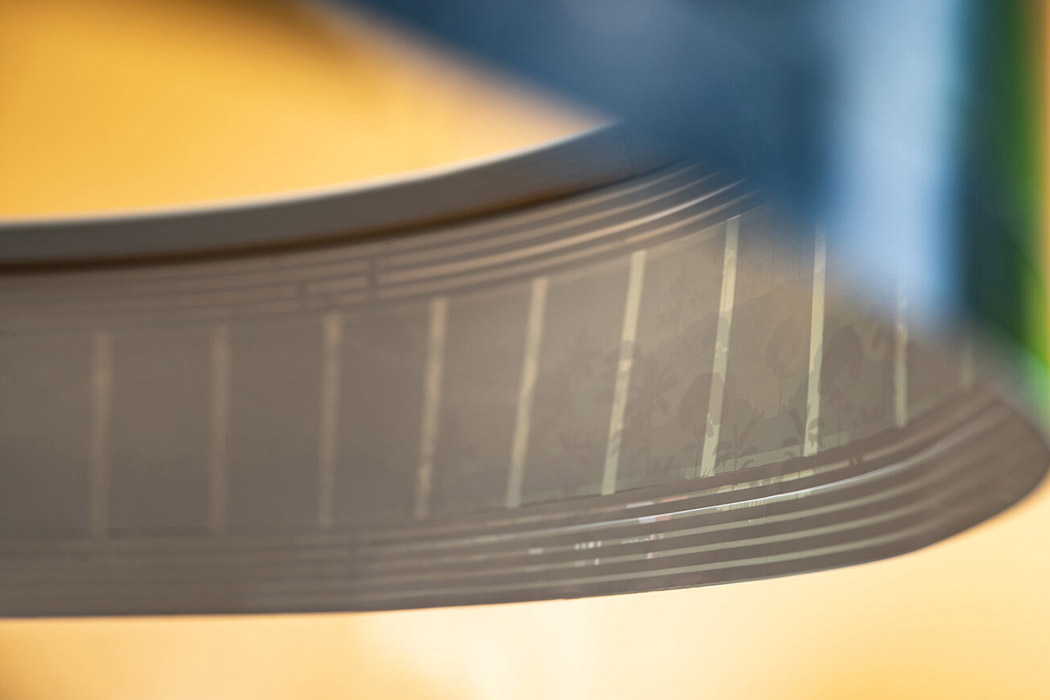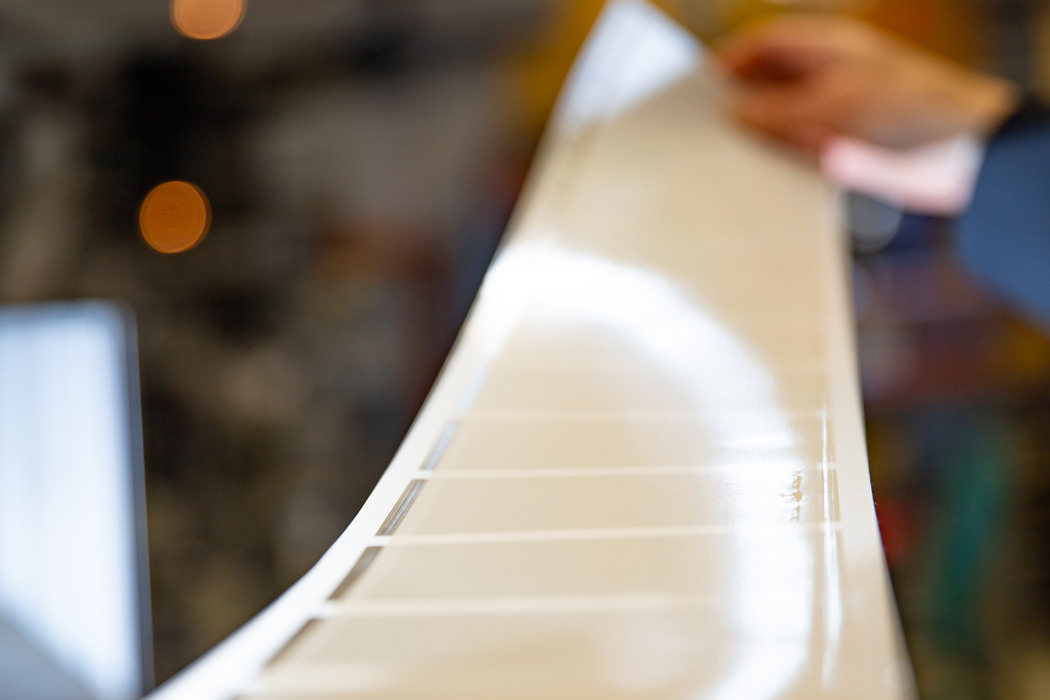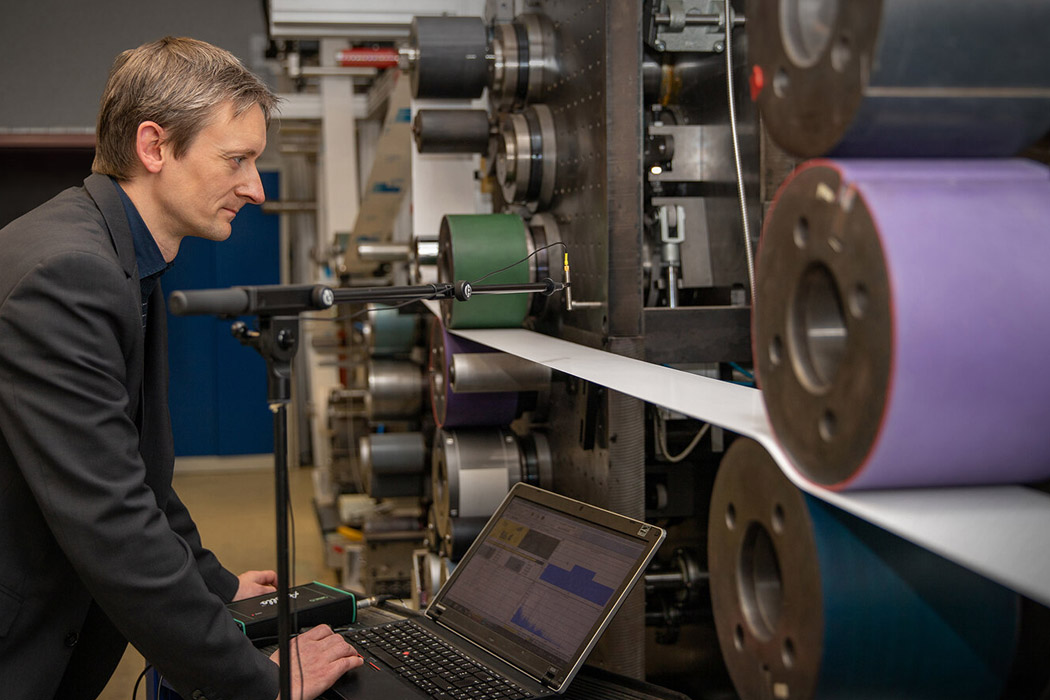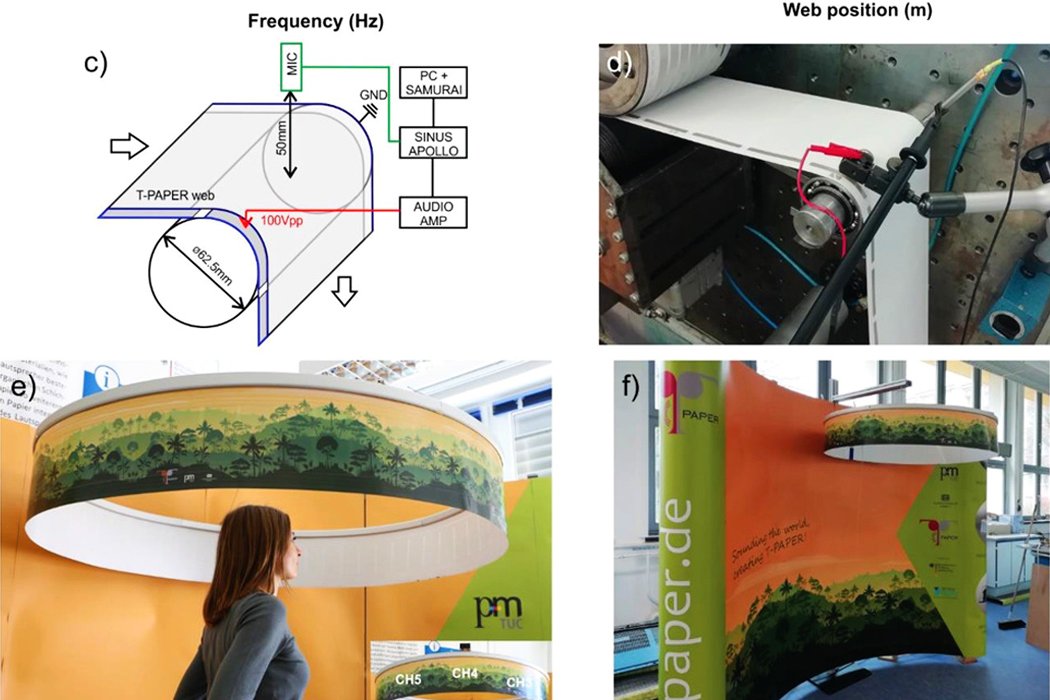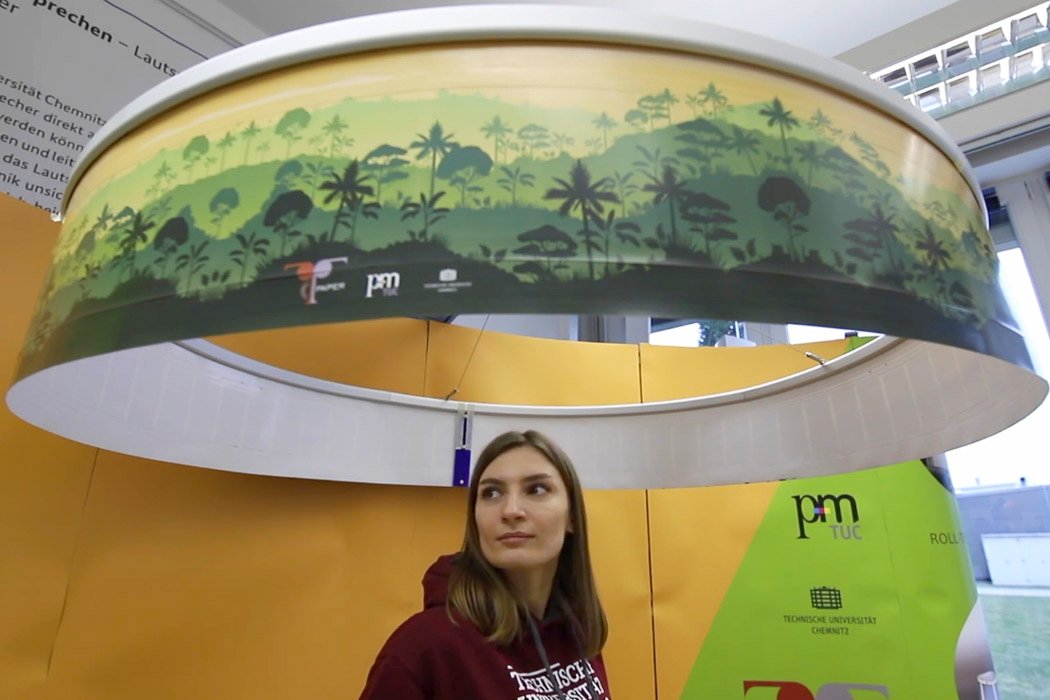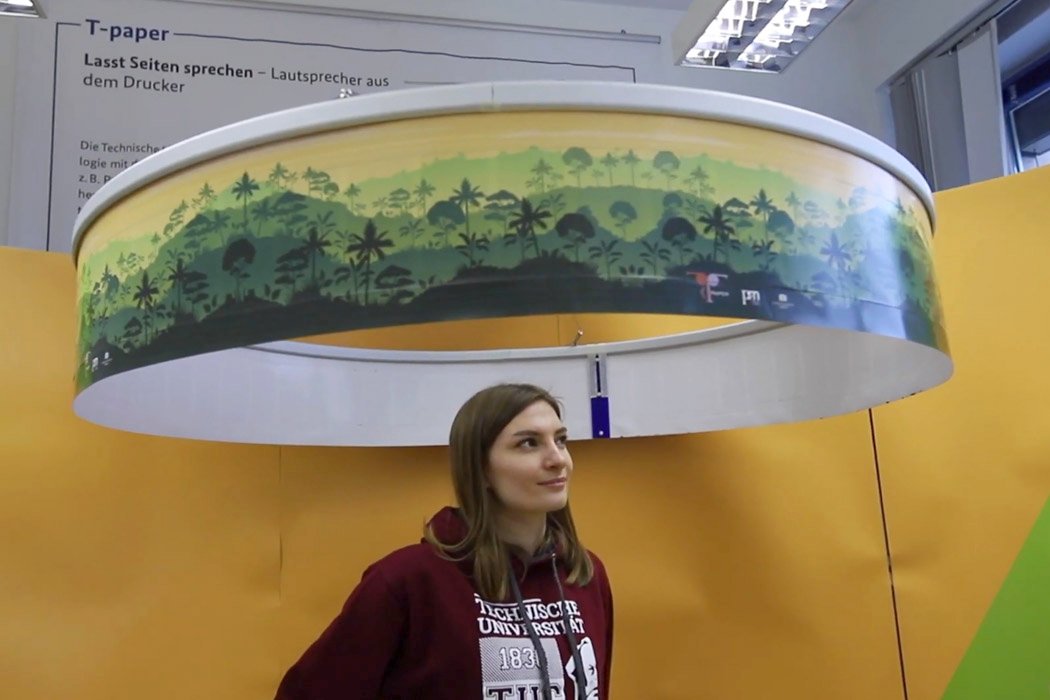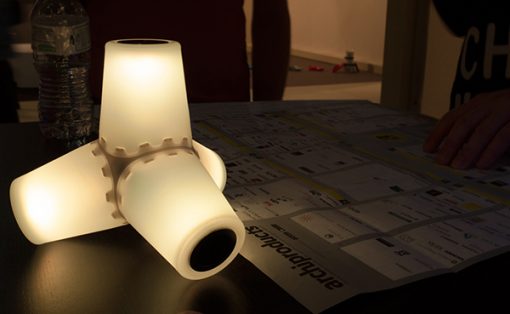When we talk of electronics the trend is to shrink down the size of already existing technology while making it better in terms of usability. The same is true for audio equipment and believe it or not a newly developed iteration of speakers by the scientists at Germany’s Chemnitz University’s Print and Media Technology institute will catch your attention beyond comprehension. No more than a roll of paper that can be tailored into circular rings to encapsulate the listener in immersive audio, the research is backed by years of hard work and determination to achieve this form factor.
The ultimate goal is to design low-cost entertainment systems for modern interiors that embrace anything that’s highly functional and minimal in its look. So, a future where your music system will merely be a thin sheet of paper that can be placed anywhere on the walls or ceiling is more than a feasible possibility. The team of researchers headed by Prof. Dr. Arved C. Hübler has been working to improve the sonorous paper loudspeakers by Chemnitz which produce sound by displacing air to create a vibration. Hence, came into existence the roll-to-roll printed speaker paper, a.k.a. T-Paper which is more economical to produce – virtually in a roll form. According to project manager Georg C. Schmidt, the newly developed technology allows them to laminate the electronics for better feasibility in practical use. “In our T-Ring prototype, an almost four-meter-long track with 56 individual loudspeakers was connected to form seven segments and shaped into a circle, making a 360° surround sound installation possible,” says Schmidt.
This means that in the near future we could see the technology being implemented in trade shows, museums, or the advertising industry. The T-Ring that the team has developed for now is nothing but 90 percent conventional paper with electronics sandwiched to generate sound that surrounds the listener for an expanded soundscape for realism. The possibilities with this technology are endless and in the coming years, we could see home entertainment systems embedded into the home décor objects for a seamless design and superior audio experience at a very low-cost thanks to the developments by Print and Media Technology institute.
Designer: Chemnitz University of Technology (Visuals: TU Chemnitz/Jacob Müller)
